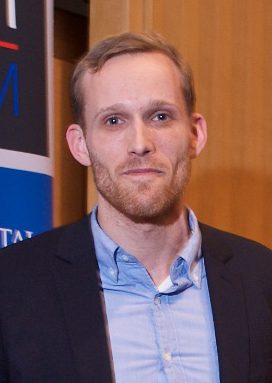Category: People
Nathalie Agar, PhD

Ana C. Anderson, PhD

Laura Fredenburgh
Laura Fredenburgh is an Assistant Professor of Medicine at Harvard Medical School and an Associate Physician in the Division of Pulmonary and Critical Care Medicine at the Brigham. Laura completed her Internal Medicine residency training at the Beth Israel Deaconess Medical Center and her fellowship in the Harvard Pulmonary and Critical Care Medicine Program. She is an attending physician in the Brigham Medical Intensive Care Unit and is an NIH and AHA-funded physician-scientist investigating the cellular and molecular mechanisms that drive pulmonary hypertension. Laura’s laboratory uses molecular approaches and mechano-biological methods to understand how alterations in the mechanical environment regulate vascular cellular behaviors, cell signaling, and transcriptomic changes to promote pulmonary vascular remodeling in pulmonary hypertension. Laura’s work spans basic mechanistic research to translational studies to interventional clinical trials. Laura is passionate about mentoring and is deeply committed to promoting the career and professional development of research fellows and junior faculty. She is thrilled to be joining the Office for Research Careers as Faculty Director.

“We hope that this can help us identify the optimal therapy for patients on a personalized basis”
Oliver Jonas, PhD
Oliver Jonas, PhD, MA, a laboratory director in the Department of Radiology, is taking precision medicine to new levels to fight cancer.
He has developed a tiny device, smaller than a grain of rice that, once implanted into part of a tumor, releases small doses of different kinds of anti-cancer therapies directly into the tumor. The device remains implanted for 24 hours and is then retrieved with the surrounding tissue, which is analyzed to measure the effect of each therapy on the tumor.
“We hope that this can help us identify the optimal therapy for patients on a personalized basis,” said Jonas, who first developed the technology as a postdoc at the Koch Institute for Integrative Cancer Research at MIT.
Prior to this year, the device had only been tested in animal models; however, a “first-in-man” study began earlier this year with breast cancer patients. Jonas, whose background is in physics, refers to the technology as “lab-in-a-patient” microdevices since they test the phenotypic response of a large number of different anti-cancer agents within tumor tissue in a rapid, minimally invasive assay. The devices are placed into tumors by biopsy needle and retrieved through biopsy or surgical removal. Multiple devices can be implanted into a single tumor or in different tumors at the same time without risk of harm to healthy tissue since the therapies are targeted locally to tumor cells only.
This past November, the Brigham Research Institute recognized Jonas and his lab of cancer biologists and mechanical and biomedical engineers for their innovative research with a BRI Director’s Transformative Award, a $500K two-year grant. The team’s proposal, which was one of 21 submissions, was selected by a scientific advisory board for its novel approach to improving cancer treatments. The announcement of the prize winner was made at Discover Brigham’s award ceremony.
The BRI award will help advance the technology to incorporate advances in micro-manufacturing and in vivo sensing – testing the tissue response inside of the tumor rather than taking the tissue out of the tumor and then testing it – to measure drug effects in real time. The award will also allow the team to conduct additional clinical studies, beginning with lung and ovarian cancer clinical trials at the Brigham, led by Yolonda Colson, MD, PhD, director of the Women’s Lung Cancer Program, and Neil Horowitz, MD, of the Department of Obstetrics and Gynecology, respectively. Jonas says he hopes these studies will provide the early validation needed to make the technology available to patients more broadly.
“We have assembled amazing teams across the departments of Radiology and Surgery and the Surgical Oncology Division to take this technology to patients.”
Oliver Jonas, PhD
“We have assembled amazing teams across the departments of Radiology and Surgery and the Surgical Oncology Division to take this technology to patients,” said Jonas. “The technology is essentially the same for each indication, and the minimally invasive procedures for implantation and retrieval in tissue are also similar. There are clear synergies across the various clinical applications, and I feel very fortunate to bring all these amazing researchers and physicians together as one team.”
Ultimately, Jonas – who has always been interested in the mechanical differences between tumor cells and regular tissue – hopes the device can be used for many other types of cancer.
“The goal with any of these kinds of projects is to develop something that will be used in patients and make a difference,” he said. “That is always the goal from start, and it remains our goal now.”
Ursula Kaiser, MD

Early in medical school, I became fascinated by the feedback loops of endocrinology and by the many systems affected by hormones, and was quickly convinced that endocrinology was my calling.
Ursula Kaiser, MD, Director, Brigham Research Institute
Dr. Kaiser’s research focuses on understanding the molecular mechanisms by which pulsatile gonadotropin-releasing hormone (GnRH) specifically and differentially regulates the expression of luteinizing hormone (LH) and follicle-stimulating hormone (FSH) genes. The processes of reproduction are critically dependent on the precise episodic and periodic timing of the release of these hormones, which are in turn required for gametogenesis and gonadal steroidogenesis. The hypothalamic neuropeptide, GnRH, is released in a pulsatile fashion and transported to the anterior pituitary, where it binds to specific, high affinity receptors (GnRHR) on gonadotropes. The frequency and amplitude of pulsatile GnRH release varies temporally and developmentally, and this variation is critical for normal reproductive maturation and function. Varying patterns of pulsatile GnRH differentially regulate LH and FSH biosynthesis and secretion. This raises the question which Dr. Kaiser’s laboratory is addressing: how does a gonadotrope respond to varying frequencies of pulsatile GnRH with differential LH and FSH production?
Dr. Kaiser is using three approaches to address this question. First, critical cis-acting elements in the LH and FSH subunit genes that mediate GnRH responses, and the cognate trans-acting factors that bind to these elements, have been identified. These elements and factors are distinct among the gonadotropin genes. Studies are underway to determine the mechanisms by which these factors act and interact to mediate transcriptional responses to pulsatile GnRH. Second, a perifusion system has been established and is used to delineate the intracellular signal transduction pathways by which pulsatile GnRH acts to regulate gonadotropin gene expression. Third, because GnRHR concentration, a critical determinant of gonadotrope responsiveness, varies in response to different frequencies of pulsatile GnRH, studies to understand the mechanisms of regulation of GnRHR gene expression itself by GnRH are being performed using cell models and transgenic, and knock-in mouse models.
Finally, another goal of the laboratory is to identify genetic mutations occurring in patients with defects in neuroendocrine control of reproduction. In particular, the effects of newly identified mutations in the GnRHR in patients with hypogonadotropic hypogonadism on signal transduction and on gonadotropin subunit gene expression are studied, providing unique structure-activity information on GnRH action and GnRHR function, and potential insights into pathways of GnRH regulation of FSH and LH biosynthesis and secretion. An additional new avenue of investigation by Dr. Kaiser is the characterization of the functional role of the G protein-coupled receptor, GPR54, and its cognate ligand, kisspeptin, in the regulation of GnRH release and action in the neuroendocrine regulation of reproductive function. This gene was recently recognized to be critical in the regulation of reproductive maturation and function based on the identification of mutations therein in patients with hypogonadotropic hypogonadism.
Under the guidance of Dr. Kaiser, research fellows will develop specific research hypotheses pertinent to Dr. Kaiser’s research program. Together with Dr. Kaiser, they will design studies to address these hypotheses, learn the necessary techniques to complete the studies, perform these studies, and analyze the results. As necessary, they will learn how to trouble-shoot the methodologies, revise the experimental approaches, and re-evaluate their original hypotheses. These studies involve primarily bench work, using basic techniques of molecular and cellular biology in vitro and in cell models, as well as transgenic, knock-out, and knock-in murine models. Fellows meet on a formal basis for an hour each week with Dr. Kaiser to discuss progress, review results, and for mentorship and career guidance, as well as informally daily as needed. Fellows also have the opportunity to hone their presentation skills at a weekly lab meeting, and also more formally at a weekly Division Research Seminar Series. Fellows also participate in a journal club to review articles relevant to their studies and to learn how to critically evaluate the literature. Fellows are encouraged to prepare manuscripts and to write grants for continued funding in close collaboration with Dr. Kaiser. The goal of this training is to give fellows the skills to become independent researchers.